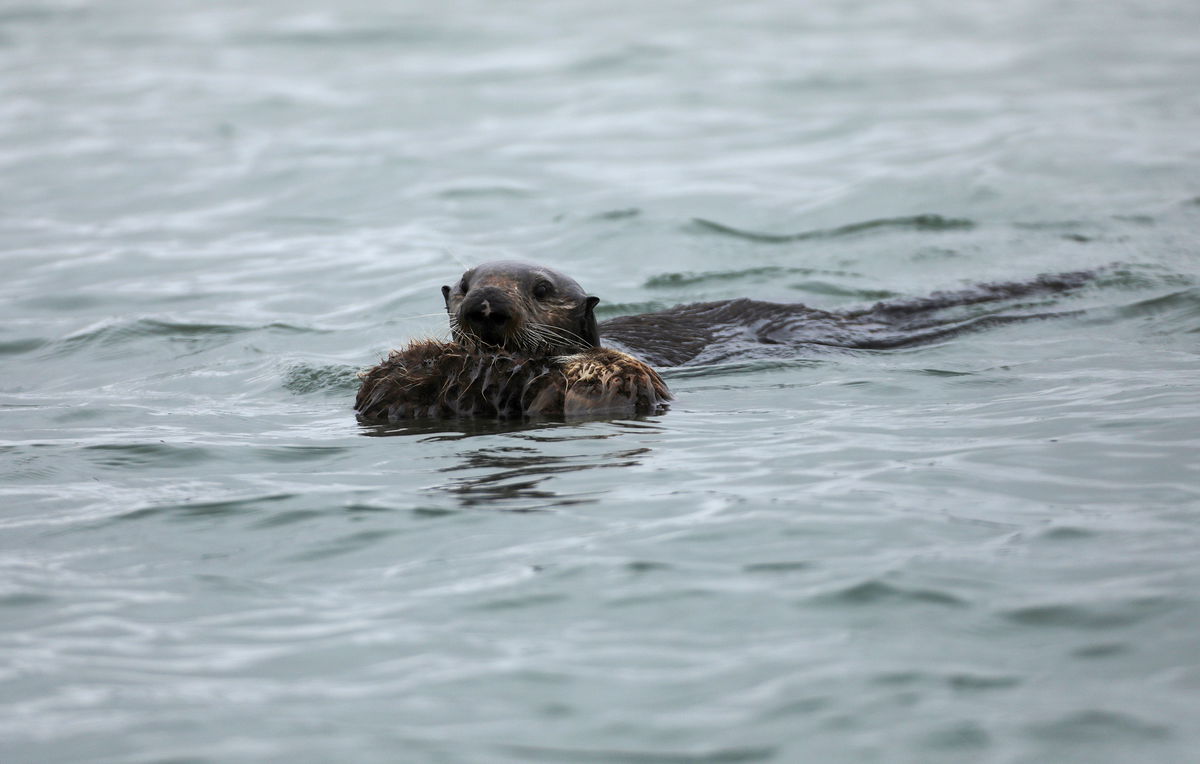Four California sea otters died from an unusual strain of a parasite that could pose a risk to humans

Originally Published: 24 MAR 23 17:15 ET
By Jamie Gumbrecht, CNN
(CNN) -- Four sea otters in California have died from a rare strain of the Toxoplasma gondii parasite that scientists said could pose a risk to human health.
Researchers called the finding a "complete surprise" because this strain of T. gondii had never been reported in any aquatic animal or in coastal California. Their study, led by researchers from the California Department of Fish and Wildlife and University of California, Davis, was published this week in the journal Frontiers in Marine Science.
Three of the sea otters were stranded within a 26.5 km span of coastal San Luis Obispo County (two of these animals were stranded within 1 km of each other) and one sea otter was stranded in Santa Cruz County on the central California coast.
"Since Toxoplasma can infect any warm-blooded animal, it could also potentially cause disease in animals and humans that share the same environment or food resources, including mussels, clams, oysters, and crabs that are consumed raw or undercooked," Melissa Miller, a California Department of Fish and Wildlife researcher and author of the paper, said in news release.
Stranded southern sea otters were transported to the California Department of Fish and Wildlife’s Marine Wildlife Veterinary Care and Research Center in Santa Cruz, CA, where detailed gross necropsies were performed on fresh and frozen-thawed individuals as previously described (Miller et al., 2020). Sampling methods varied depending on postmortem condition, with formalin fixation of all major tissues for some animals, while others had more limited sampling due to autolysis or freeze-thaw artifact.
The four sea otters stranded from 2020 to 2022, and each had an "unusual and severe" condition called steatitis, or inflammation of body fat. Toxoplasmosis is common in sea otters, and it's known that it can be deadly, the researchers wrote, but this strain of T. gondii was able to rapidly kill apparently healthy adult otters.
No cases have been reported in humans, but researchers called the otters "important sentinels" of the circulating strain, which could be a risk to people eating seafood or ingesting contaminated water.
"Because this parasite can infect humans and other animals, we want others to be aware of our findings, quickly recognize cases if they encounter them, and take precautions to prevent infection," Miller said. "We encourage others to take extra precautions if they observe inflamed systemic fat deposits in sea otters or other marine wildlife."
Most people infected with T. gondii have no symptoms and aren't aware of their infection, but severe toxoplasmosis can cause damage to the brain, eyes and other organs, according to the US Centers for Disease Control and Prevention. It can be transmitted from mother to fetus during pregnancy and can lead to significant health problems after birth. People at higher risk for severe infection are infants born to mothers who were infected during or shortly before pregnancy and people with weakened immune systems.
To prevent any toxoplasmosis infection, the CDC recommends typical food safety practices such as cooking foods to a high internal temperature, rinsing fruits and vegetables and washing utensils.
Cat feces is known to contain high levels of the parasite, so the CDC urges people to keep pet cats inside, change the litter box every day -- before the parasite becomes infectious -- and wash hands well.
In the study, the researchers said more work is needed to investigate habitat or climate change factors that may have led to the spread of the rare strain in otters, and to examine whether other aquatic wildlife are infected.
The-CNN-Wire™ & © 2023 Cable News Network, Inc., a Warner Bros. Discovery Company. All rights reserved.

